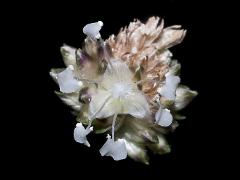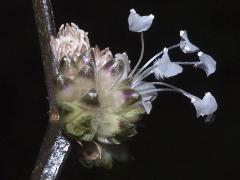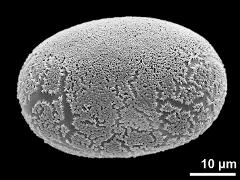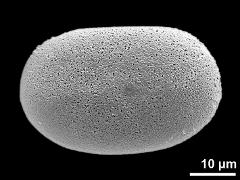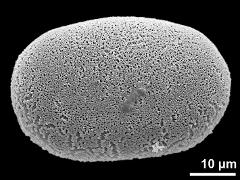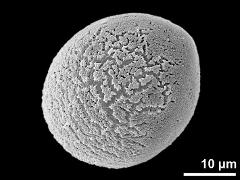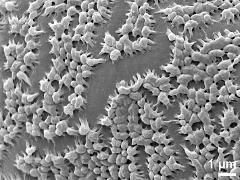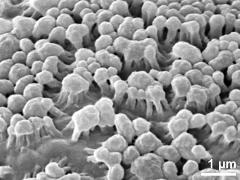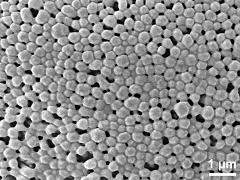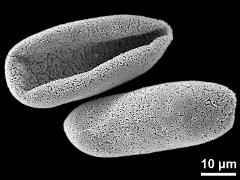Callisia fragrans
Taxonomy: Angiospermae, Commelinales, Commelinaceae, Callisia
Published: 2016-11-29
Pollen Description
Shape, Size and Aperture
pollen unit: monad, dispersal unit and peculiarities: monad, size (pollen unit): medium-sized (26-50 µm), size of hydrated pollen (LM): -, shortest polar axis in equatorial view (LM): -, longest polar axis in equatorial view (LM): -, shortest diameter in equatorial or polar view (LM): -, longest diameter in equatorial or polar view (LM): -, pollen class: sulcate, polarity: heteropolar, P/E-ratio: oblate, shape: -, outline in polar view: elliptic, dominant orientation (LM): -, P/E-ratio (dry pollen): -, shape (dry pollen): boat-shaped, outline in polar view (dry pollen): -, infoldings (dry pollen): aperture(s) sunken, aperture number: 1, aperture type: sulcus, aperture condition: sulcate, aperture peculiarities: aperture membrane ornamented
Ornamentation and Structure
LM ornamentation LM: -, nexine: -, sexine: -, SEM ornamentation SEM: microclavate, no suitable term, suprasculpture SEM: -, TEM tectum: -, infratectum: -, foot layer: -, endexine: -, intine: -, wall peculiarities: -, supratectal element: -
Miscellaneous
pollen coatings: -, reserves in cytoplasm: -, cell number: -, Ubisch bodies: -
Annotations: ornamantation consisting of fused heads of microclavae
Author(s) of diagnosis: Halbritter, Heidemarie
Pictures
Picture legend
- inflorescence of Callisia fragans, photographer: Buchner, R.
- inflorescence of Callisia fragans, photographer: Buchner, R.
- polar distal view (oblique) - fresh, rehydration (water) & DMP & critical point dried, photographer: Halbritter, H.
- polar proximal view - fresh, rehydration (water) & DMP & critical point dried, photographer: Halbritter, H.
- equatorial view - fresh, rehydration (water) & DMP & critical point dried, photographer: Halbritter, H.
- equatorial view - fresh, rehydration (water) & DMP & critical point dried, photographer: Halbritter, H.
- detail of sulcus - fresh, rehydration (water) & DMP & critical point dried, photographer: Halbritter, H.
- detail of sulcus - fresh, rehydration (water) & DMP & critical point dried, photographer: Halbritter, H.
- exine surface - fresh, rehydration (water) & DMP & critical point dried, photographer: Halbritter, H.
- dry pollen grains - dry, photographer: Halbritter, H.
Literature
- (1998) Preparing living pollen material for scanning electron microscopy using 2,2-dimethoxypropane (DMP) and criticalpoint drying. Biotechnic Histochem 73: 137–143
Copyright and Citation
Cite this publication as:
Halbritter H., Buchner R. 2016. Callisia fragrans. In: PalDat - A palynological database. https://pc8.botanik.univie.ac.at/pub/Callisia_fragrans/302511;jsessionid=DE8921D235474753EBE8AC6FD206D923; accessed 2025-01-10

